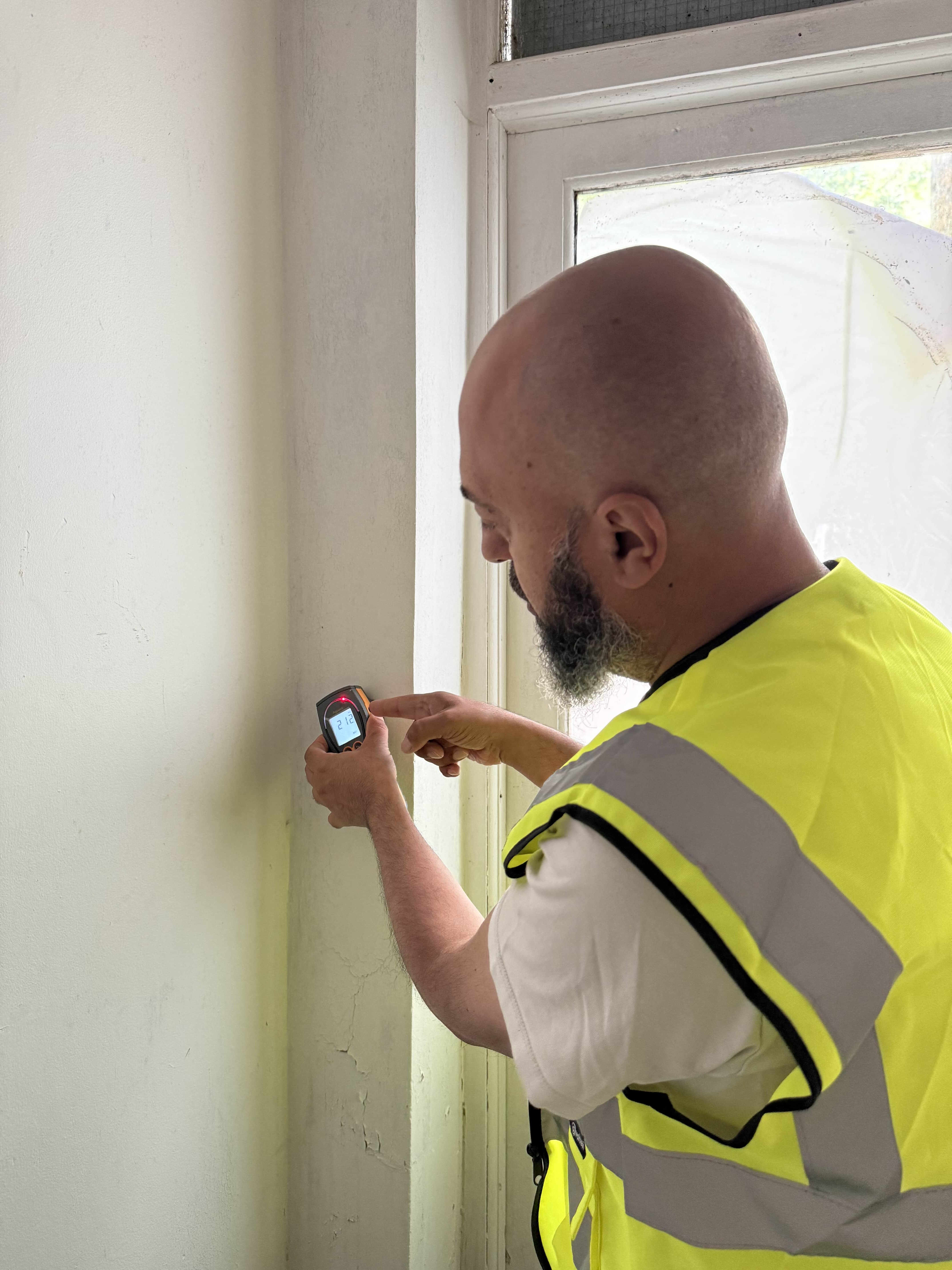Overview: Tenant Rights vs Landlord Responsibilities
As a landlord in London, damp issues can quickly escalate into costly legal disputes if not managed proactively. Understanding your responsibilities and tenant rights is essential to protect yourself legally. Tenants increasingly seek legal action when damp affects their health or the property's habitability, making proactive management crucial.
London’s Specific Regulations Explained
Two significant regulations impact London landlords:
Homes (Fitness for Human Habitation) Act 2018: Requires landlords to provide properties that are safe, healthy, and free from serious hazards, including damp.
Environmental Health Act & Housing Health and Safety Rating System (HHSRS): Allows local councils to investigate damp complaints and enforce repairs through improvement notices.
Being aware of these regulations helps avoid legal pitfalls and ensures compliance.
When Can a Tenant Legally Sue Over Damp Issues?
Tenants in London have strong legal protections against living in properties affected by damp or mould. While not every damp issue leads immediately to court, there are several clear scenarios when tenants have the legal right—and a strong chance—to pursue legal action against their landlord:
1. Failure to Respond Promptly After Written Notice
When tenants inform you about damp issues in writing (email, letter, or formal notice), you have a legal obligation to respond and address the problem within a reasonable timeframe. Ignoring or delaying your response can be interpreted as negligence under the Homes (Fitness for Human Habitation) Act 2018 and the Landlord and Tenant Act 1985. If the tenant feels you’ve unreasonably delayed action, they have grounds to escalate the issue legally, potentially applying for a Rent Repayment Order or claiming compensation for living conditions.
2. Significant Impact on Tenants’ Health or Wellbeing
Damp and mould aren’t just cosmetic problems—they pose serious health risks. If damp conditions lead to health issues, especially respiratory illnesses (asthma, allergies, bronchitis) or exacerbate pre-existing medical conditions, tenants may have strong grounds to sue. Medical records from GPs or the NHS documenting symptoms linked directly to damp living conditions often support tenants' claims in court or housing tribunals.
Under the Environmental Protection Act 1990, the local council can also become involved if tenants report a statutory nuisance caused by damp or mould, significantly strengthening a tenant’s legal position.
3. Intervention from Local Authority: Improvement or Hazard Notices
If tenants contact their local council due to ongoing unresolved damp issues, the local authority may conduct an inspection under the Housing Health and Safety Rating System (HHSRS). If damp conditions are severe enough, the council can issue an:
Improvement Notice: Demanding remedial works within a specific timeframe. Failing to comply can result in prosecution, significant fines, and potential rent repayment orders.
Hazard Awareness Notice: Official documentation warning of hazards and risks. While this notice itself doesn't immediately lead to prosecution, it strengthens the tenant's legal position if the landlord continues to neglect repairs.
Receiving either type of notice strongly supports the tenant’s legal claim, making it crucial for landlords to act promptly by commissioning a professional damp survey and completing recommended repairs.
Examples of Successful Rent Repayment Orders and Court Cases
Lewisham (2022): A landlord was ordered to pay over £6,000 in rent repayment for ignoring severe mould and damp that caused tenant health issues.
Southwark (2023): £8,500 awarded to tenants after court action due to unresolved rising damp and poor ventilation.
These cases underline the financial risks of ignoring damp complaints.
How to Prevent Legal Action: Step-by-Step for Landlords
To protect yourself legally:
Immediate Acknowledgment: Respond promptly and formally when a tenant raises damp concerns.
Arrange Professional Inspection: Book a qualified damp survey immediately.
Communicate Clearly: Keep tenants informed about inspection dates, findings, and remediation plans.
Document Everything: Maintain detailed records of communication, inspections, and repairs.
Implement Repairs Quickly: Act on the survey recommendations without delay.
Why a Professional Damp Survey is Your Best Defence
Professional damp surveys provide concrete evidence to demonstrate you have responsibly addressed the issue. Surveys typically include:
Detailed diagnosis of damp type (rising, penetrating, condensation).
Evidence-based moisture readings and thermal images.
Independent recommendations for remediation.
Such evidence is invaluable during legal proceedings or council inspections.
Potential Costs of Ignoring Damp Issues
Ignoring damp can lead to significant financial consequences:
Rent repayment orders: up to 12 months' rent returned to tenants.
Legal costs: Court fees, solicitor charges, and compensation payments.
Council enforcement: Improvement notices, fines, or criminal prosecution.
For example, in Southwark, landlords have faced penalties exceeding £10,000 for neglecting damp.
FAQs on Tenant Legal Action for Damp
FAQ #1:
Can tenants legally withhold rent because of damp in London?
Yes, tenants can legally withhold rent in specific circumstances, but it must be handled carefully. Under the Homes (Fitness for Human Habitation) Act 2018, if damp or mould significantly impacts a tenant’s health or safety, they can take legal action, including withholding rent or applying for a Rent Repayment Order (RRO).
However, tenants must first give the landlord reasonable notice and an opportunity to resolve the damp issue. If a landlord can demonstrate they took immediate and adequate action such as conducting a professional damp survey and arranging repairs the tenant's grounds for withholding rent are weakened. Landlords should always document their responses clearly and professionally to avoid legal complications.
FAQ #2:
What exactly is a Rent Repayment Order (RRO), and how does it relate to damp issues?
A Rent Repayment Order is a legal mechanism that allows tenants to reclaim up to 12 months’ rent from landlords in cases of severe property disrepair, including significant damp and mould. RROs are granted by the First-tier Tribunal (Property Chamber), usually when a landlord has failed to respond adequately to a damp complaint, leaving the property unfit for habitation.
To successfully claim an RRO, tenants typically provide evidence such as photos, medical records showing health impacts, and ideally a professional damp survey report. Landlords can defend against RROs by proving timely and reasonable responses, backed by independent damp surveys and documented repairs.
FAQ #3:
How quickly should London landlords respond to damp complaints to avoid legal action?
Landlords should acknowledge and initially respond to damp complaints within 48 hours. A full professional damp inspection should ideally be arranged within 7-14 days. Prompt action demonstrates proactive management and responsibility, helping landlords mitigate legal risks.
If repairs are needed following a survey, reasonable timescales typically range from 14-28 days, depending on severity. Good communication, thorough documentation, and an immediate professional damp survey are the best ways to prevent complaints from escalating into costly legal disputes.
FAQ #4:
Can landlords recover the cost of damp repairs from tenants in London?
Landlords usually cannot recover repair costs for damp from tenants unless clear tenant negligence caused the damp (e.g., deliberate blocking of ventilation, intentional damage, or repeatedly ignoring instructions on proper ventilation).
Typically, structural issues, poor insulation, rising damp, or penetrating damp caused by maintenance issues are the landlord’s responsibility. To determine liability clearly, landlords should arrange an independent professional damp survey. The survey will provide expert analysis on the cause, and if it proves tenant negligence, it can support recovering costs through deposit deductions or court claims.
FAQ #5:
What evidence do London landlords need to protect themselves legally against damp complaints?
Landlords should collect and maintain detailed evidence to protect against damp complaints. Essential documentation includes:
Professional damp survey report: Clearly identifies type, cause, severity, and recommended repairs.
Photographic evidence: Images before, during, and after repairs clearly showing damp issues and rectification steps.
Written communication: Emails or letters demonstrating quick responses and ongoing dialogue with tenants.
Repair invoices and receipts: Proof of completed repairs and their timelines.
Compliance evidence: Records showing adherence to all relevant regulations (Homes Act, Housing Act, HHSRS guidelines).
This evidence collectively helps demonstrate responsible management, significantly reducing landlords' vulnerability to legal action from tenants.
Case Study: Resolving a Tenant-Landlord Dispute in Camden
In Camden, tenants threatened legal action over persistent mould. Our professional damp survey revealed hidden structural bridging causing penetrating damp. Using our report, the landlord promptly arranged appropriate repairs, resolved tenant complaints, and avoided costly court action.
Book Your Defensive Damp Survey Now
Proactively booking a damp survey safeguards your investment, prevents legal complications, and ensures compliance with London housing regulations. Henderson Wood offers expert-led, legally recognised damp surveys across all London boroughs.
[Book Your Damp Survey Today]

